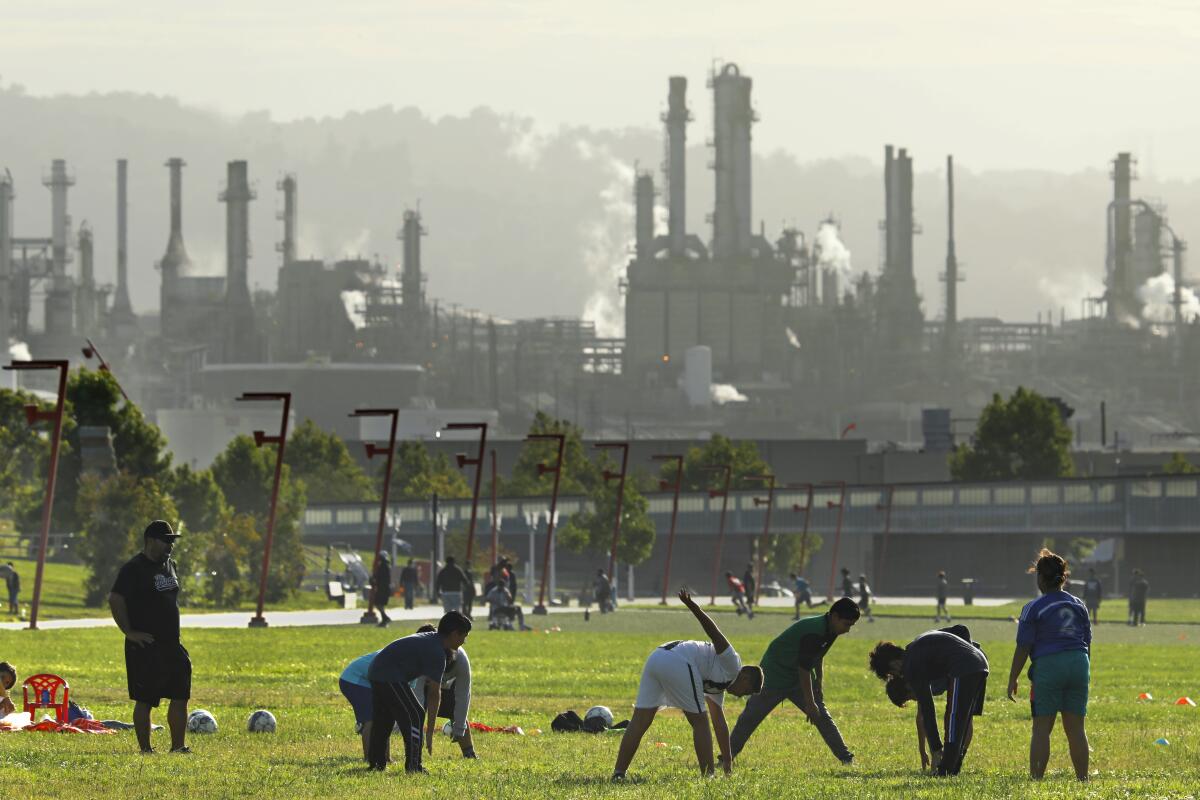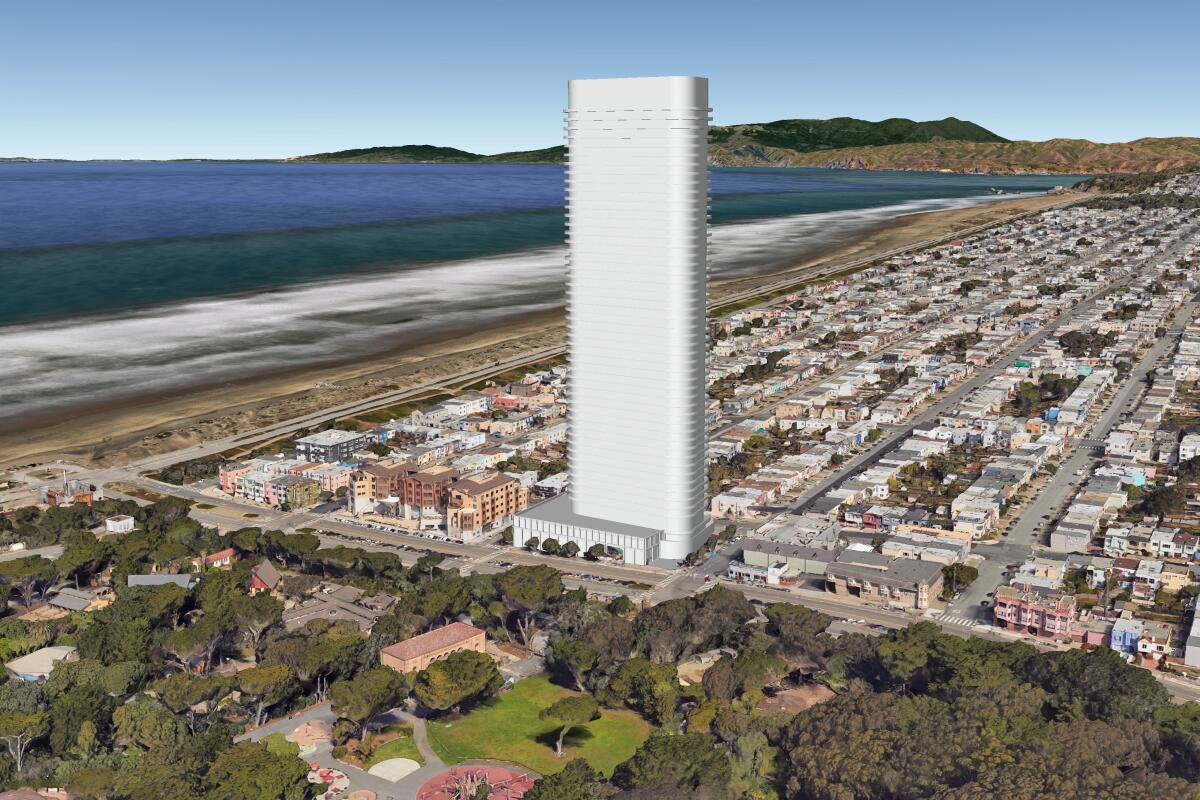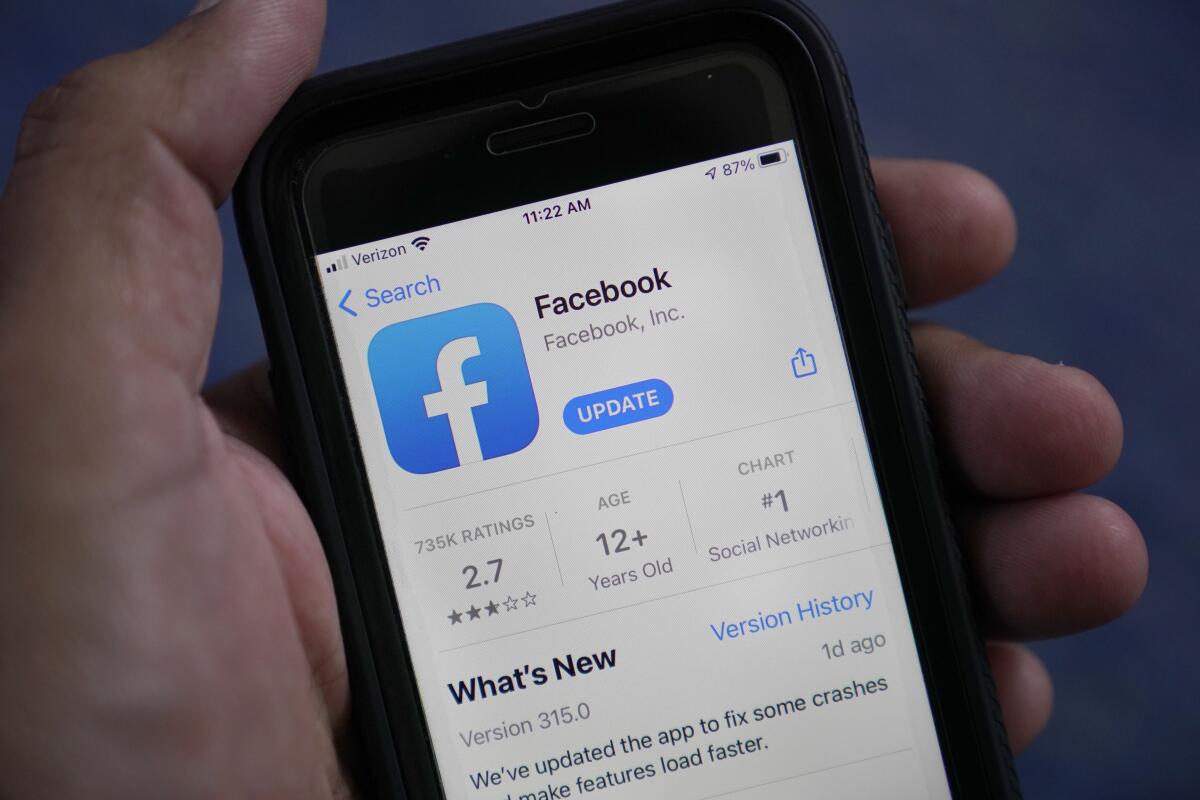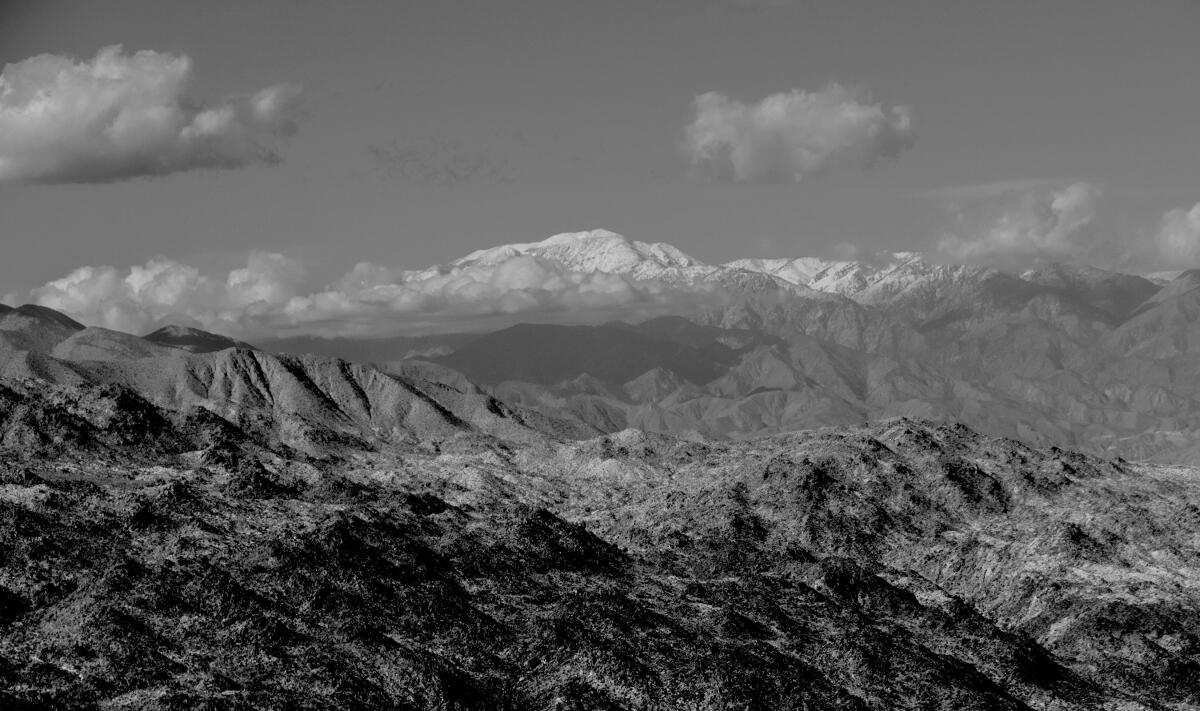Take a deep breath — or maybe don’t. California’s air quality report card is in

- Share via
Good morning, and welcome to the Essential California newsletter. It’s Thursday, April 20.
California’s latest air quality report card has arrived, and it’s another one we’d be embarrassed to show our parents.
The American Lung Assn.’s 2023 State of the Air report shows that the overwhelming majority of Californians live in communities with unhealthy levels of smog or fine particles.
The A-F grades are calculated “based on the number of days a county’s air reaches unhealthful levels on the Air Quality Index,” the report states.
The report cards center on three key data points that measure two kinds of air pollution:
- Ozone pollution (aka smog)
- Daily particle pollution (tiny droplets of chemicals, metals, dust, pollen and more floating in the air)
- Yearly fine particle pollution
Both pollutants are linked to a host of respiratory problems and premature death, especially among older Americans.
It’s not a mystery where all this pollution is coming from. Transportation — all the driving we do in mostly gas-powered vehicles — and its related emissions (from activities like fuel production) account for “approximately 50% of greenhouse gas emissions... and 80% of air pollutants in California,” according to the California Air Resources Board.
This is the 24th annual report from the Lung Assn., which began in 2000.
“From the beginning, the findings in ‘State of the Air’ have reflected the successes of the Clean Air Act, as emissions from transportation, power plants and manufacturing have been reduced,” researchers wrote. “In recent years, however, the findings of the report have added to the evidence that a changing climate is making it harder to protect human health.”
So, how bad is it in California? That depends on which county you’re in, though the majority of counties in the report posted failing grades, indicating a high number of unhealthy air days — and increased health risks across much of the state. Several counties didn’t have adequate data to be graded.
In terms of fine particle pollution, no California county received an A. Humboldt County had the least particulate pollution with the state’s lone B grade. Yolo County got a C; Imperial, Lake and Ventura counties received Ds.
The remaining 41 counties received failing grades.
The grades for ozone pollution, calculated based on the number of high ozone days, were only slightly more diverse.
“A” counties: Colusa, Glenn, Humboldt, Lake, Mendocino, Monterey, Santa Cruz, Siskiyou, Sonoma
“B” counties: Marin, San Francisco
“C” counties: Napa, San Benito, San Mateo, Yolo
“D” counties: Amador, Santa Barbara, Solano, Tuolumne
“F” counties: everywhere else
In this year’s report, Bakersfield supplanted Fresno as the metropolitan area with the worst short-term particle pollution. Bakersfield and Visalia were tied as the worst for annual particle pollution.
Shocking no one, Greater Los Angeles retained its place as the smoggiest metro area in the nation, a status it has held for all but one of the 24 years of air quality reports.
The H̶a̶z̶y̶ Golden State also dominates the report’s lists of the most polluted places in the U.S.
Of the 25 most ozone-choked counties in the nation, 17 are in California. Fifteen of the worst 25 counties for year-round fine particle pollution are here.
The report also notes the unequal burden of unhealthy air among people of color in lower-income communities. Researchers wrote:
...in the counties with the worst air quality that get failing grades for all three pollution measures, 72% of the 18 million residents affected are people of color, compared to the 28% who are white.
Recent research indicates those inequities could get even worse in California as extreme heat and drought intensify.

Given the sad state of our air, it’s no wonder California is at the forefront of the national movement to phase out gas-powered cars.
Following a 2020 order from Gov. Gavin Newsom, the California Air Resources Board developed a plan to ban sales of new gas-powered vehicles by 2035. Similar state restrictions on diesel-burning big rigs were also recently given the green light by federal regulators.
Though the report paints a dire picture for air quality in California and across the U.S., researchers note that many cities and counties have had fewer days with unhealthy pollution levels in recent years.
Still, the report notes “a widening disparity between air quality in eastern and western states, especially for particle pollution.”
Researchers point to two factors driving that divide: recent policy adoptions to curb emissions, plus increased pollution fueled by climate change. In California and other western states, that has largely come in the form of extreme heat, drought and wildfires that lead to more ozone and particle pollution.
One other potential difference-maker: the shift in commuting patterns brought on by the pandemic, namely increased remote work. The study notes those impacts are still being studied.
As for how we improve our air quality, the report outlines several solutions aimed at individuals or governments — many of them focused on our vehicles. A few examples:
- Drive our cars less and opt to walk, bike or take transit
- Swap our pollutant-spewing vehicles for electric options, including government vehicle fleets of trucks and buses
- Invest in clean energy sources to replace oil, natural gas and other combustion
The American Lung Assn. also encouraged other states to adopt California’s ambitious zero-emissions standards.
In Southern California, efforts to curb air pollution face some intergovernmental tensions, as my colleague Tony Briscoe reports. The South Coast Air Quality Management District recently sued the U.S. Environmental Protection Agency, arguing that efforts to reduce car emissions will be undermined by a projected increase in pollution from aircraft, locomotives, and ships — which all fall under federal jurisdiction.
You can read the full 2023 State of the Air report, or check out California’s report card.
And now, here’s what’s happening across California:
Note: Some of the sites we link to may limit the number of stories you can access without subscribing.
L.A. STORIES
A shuttered Japanese rice cracker factory bordering Little Tokyo and skid row is set to be replaced by affordable housing. The “Umeya” project — named after the cracker company — will feature 175 affordable housing units, with half of those set aside as permanent supportive housing. LAist
How much would you pay to spend the night surrounded by books? Some people are paying up to $250 each for a sleepover at the Last Bookstore in downtown L.A. Times writer Julia Carmel shares their night of avoiding dark corners and an allegedly haunted bookcase. Los Angeles Times
Check out "The Times" podcast for essential news and more
These days, waking up to current events can be, well, daunting. If you’re seeking a more balanced news diet, “The Times” podcast is for you. Gustavo Arellano, along with a diverse set of reporters from the award-winning L.A. Times newsroom, delivers the most interesting stories from the Los Angeles Times every Monday, Wednesday and Friday. Listen and subscribe wherever you get your podcasts.
POLITICS AND GOVERNMENT
A proposed housing project in a San Francisco neighborhood definitely draws the eye. At 560 feet, the apartment building would tower over the community of mostly two- and three-story homes, raising concerns among some residents who want the city to shut down the project. Los Angeles Times

Over 1 million Californians have yet to use their middle class tax refunds, totaling $800 million in unused relief money. One contributing reason: A phone line meant to help recipients activate their cards has faced long waits and connection issues. San Francisco Chronicle
The state’s pandemic relief money is running dry, but advocates say low-income families still need help. Two bills seek to provide some by expanding California’s earned income and young child tax credits in an effort to counter the inflated costs of groceries, gas and other essentials. CalMatters
CRIME, COURTS AND POLICING
*TV lawyer voice*: “Did you or a loved one use Facebook between May 24, 2007 and Dec. 22, 2022? You may be entitled to compensation.” Meta, the parent company of the behemoth social media site, has agreed to pay $725 million to settle multiple class-action lawsuits stemming from 2018’s Cambridge Analytica scandal. Here’s how to claim your share of that cash (which will shrink as more people file claims). Los Angeles Times

Nearly two years after an explosion triggered by the LAPD’s bomb squad ripped through a South L.A. neighborhood, one of the officers involved in the blast is facing discipline. The unnamed officer was suspended for 10 days without pay, with police officials citing “neglect of duty” as the reason. The June 2021 incident was meant to be a controlled detonation of illegal fireworks, but a miscalculation by LAPD officials caused a violent explosion, injuring 17 people and destroying homes and other properties and displacing residents. Los Angeles Times
The L.A. Unified School District has agreed to pay $6.5 million to a former student after administrators failed to report sex abuse by a teacher. The victim reported being molested, abused and raped nearly 16 years ago and told two school administrators about it. They were later convicted of criminal charges for failing to report the crime. Los Angeles Times
Support our journalism
HEALTH AND THE ENVIRONMENT
California’s bountiful snowpack is quickly changing the state. Satellite images show a striking before-and-after comparison over a few weeks time. The great snowmelt could make flood danger in the San Joaquin Valley a concern for the rest of 2023. Los Angeles Times
Call it a humpback comeback. After a famous female whale was struck and killed by a ship in Bay Area waters last August, marine biologists feared the worst for her young calf. But the orphaned whale, named Aria, has been spotted swimming in Monterey Bay after successfully completing a migration to and from Mexico. Mercury News
The CDC has approved a second bivalent booster for those at greater risk of COVID complications. That includes peope 65 and older, along with immunocompromised people. Los Angeles Times
Free online games
Get our free daily crossword puzzle, sudoku, word search and arcade games in our new game center at latimes.com/games.
AND FINALLY
Today’s California landmark is from L.A. resident Ariel Swartley: Mt. San Gorgonio in the San Bernardino Mountains.

Ariel writes:
Mount San Gorgonio is the highest peak in Southern California, and when it is covered with snow I can often see it from my neighborhood in San Pedro, 90 miles away. Last November, we were in Palm Springs when an early snowstorm arrived. The next morning, driving home over the Palms to Pines highway, we caught this closer view of a ghostly white Gorgonio seeming to float above some nearby clouds.
What are California’s essential landmarks? Fill out this form to send us your photos of a special spot in California — natural or human-made. Tell us why it’s interesting and what makes it a symbol of life in the Golden State. Please be sure to include only photos taken directly by you. Your submission could be featured in a future edition of the newsletter.
Please let us know what we can do to make this newsletter more useful to you. Send comments to [email protected].
Sign up for Essential California
The most important California stories and recommendations in your inbox every morning.
You may occasionally receive promotional content from the Los Angeles Times.



